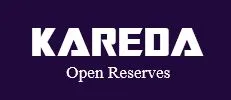Once the initial evaluation of the subsurface reservoir is cleared, the next stage is to plan the drilling program and surface equipment required to process the extracted minerals.
For this reason, we will be ready to provide our customers with the following:
- Well Designs (Drilling Program and Completions):
- This involves detailed engineering plans for drilling wells and completing them. It includes selecting appropriate drilling techniques, casing design, well trajectory planning, and selecting completion techniques such as hydraulic fracturing.
- Optimization of Well Placements:
- Assessing subsurface geology and reservoir characteristics to optimize the location and orientation of wells within the field. This may involve geostatistical analysis, reservoir simulation, and reservoir modeling to maximize hydrocarbon recovery.
- Planning of Experimental Exploitation Programs:
- Designing and executing pilot projects or experimental phases to test reservoir performance and production techniques, which can inform decisions for full-scale development.
- Planning of the Transition from Experimental into Permanent Exploitation:
- Developing strategies for transitioning successful experimental or pilot projects into permanent production. This includes scaling up production infrastructure and adjusting operational procedures.
- Workover Portfolio Supervision:
- Managing workover activities to maintain or enhance well productivity. This involves planning and executing interventions such as well stimulation, remedial cementing, or artificial lift installation.
- Organization and Sizing of Surface Facilities:
- Designing surface facilities including production platforms, processing plants, pipelines, and storage facilities to efficiently handle produced fluids. This also involves determining capacities, layouts, and safety considerations.
- Related Workflows for Fluid Processing:
- Developing workflows and procedures for fluid processing operations including separation, treatment, and transportation. This ensures efficient and safe handling of hydrocarbons and compliance with regulatory requirements.
- Delivery Options Planning:
- Assessing various options for transporting produced hydrocarbons to market, including pipelines, tanker shipments, or rail transport. This involves evaluating costs, logistics, and regulatory constraints.
- Negotiating Delivery Contracts:
- Engaging in negotiations with transportation service providers, commodity traders, buyers, and other stakeholders to secure favorable delivery contracts that meet the project’s needs and financial objectives.
- Environmental Impact Assessment:
- Conducting thorough assessments of potential environmental impacts associated with field development activities. This includes identifying risks to air and water quality, wildlife habitats, and local communities, and implementing mitigation measures.
- Economic Evaluation:
- Performing economic analyses to assess the financial viability of the field development plan. This includes estimating capital and operating costs, revenue projections, cash flow analysis, and determining key economic indicators such as net present value and internal rate of return.
- Planning of Abandonment Stage for Wells and Surface Facilities:
- Developing plans and procedures for the safe and environmentally responsible decommissioning and abandonment of wells and surface facilities at the end of their productive life. This involves plugging wells, removing equipment, and restoring the site to its original condition.
- Regulatory Compliance:
- Ensuring compliance with applicable regulations and obtaining necessary permits and approvals from regulatory authorities.
- Risk Management:
- Identifying and mitigating project risks related to geology, reservoir performance, market conditions, regulatory changes, and operational factors.
- Technology Assessment:
- Evaluating emerging technologies and innovations that could improve field development efficiency, reduce costs, or enhance environmental performance.

